Planning an international trip? Congratulations! As part of your travel prep, making sure your passport is current and that you have the needed travel visas are critical ingredients for success. Not having an updated passport & required visas can be a recipe for a travel disaster – and I should know!
Yes, I have had “visa screw-ups” – TWO TIMES! – that really messed with my travel plans. Even though they both happened over 20 years ago, the painful memories still linger. So, I want to make sure that you are never turned away at an airport (like me!) or border crossing because your documentation is not in order.
The subject of travel visas can be a bit complex because of many variables, but I hope to give you a good foundation for making sure you obtain the proper visas. Some article specifics are focused on American travelers, but the principles are applicable for everyone.
I first wrote this blog post in 2017, but am now updating it in 2024. Last year, I traveled to West Africa – to Ghana, Benin & Togo. The trip gave me additional travel visa experience to share with you since each country’s visa requirement was different.
So, let’s get started. Here’s what you really need to know about visas – including the story of my two mishaps!
What Exactly is a Travel Visa?
Essentially, a visa is a stamp placed in your passport by a foreign government, allowing you to enter their country for a specific length of time and for a specific purpose – such as tourism or business. Regulations vary greatly from country to country – and also depend upon your country of citizenship.
For example, many countries grant American travelers an “automatic” visa upon entry – often for between 30 and 90 days. In this case, you’re officially on a “short stay visitor” status.
There is also the “visa on arrival” process. And some countries require that you obtain a “formal” travel visa in advance through their embassy (or one of the consulate offices) in your home country.
Different types of visas are issued, depending on the purpose of your visit. The Tourist Visa – the one we are focused on here – is for pleasure travel. There are also business (ie, work) visas and student visas for studying abroad.
Then there is the whole category of immigration and naturalization visas. Lastly, many countries offer Transit Visas, designed for very short stays within an airport (often less than 8 hours), for air travelers en route to a final destination.
How Do You Know if You Need A Travel Visa?
Ah, hah – the $64,000 question! Luckily, it’s pretty easy for Americans thanks to the excellent U.S. Department of State’s website with its International Travel page. On that page, in the “Country Information” box (upper right), click on the “Learn About Your Destination” link. Then, simply type in the country you will be visiting and a new page pops up with helpful travel-related info for that country.
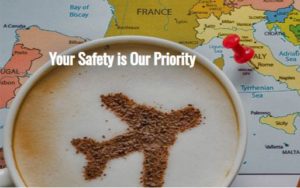
It will also have a link to the website of the country’s embassy where you definitely want to double check for the most current visa information, including fees.
If you are traveling with a group on a tour or cruise, you will most likely receive specific travel visa information from them. But, it never hurts to double check the State Department website and that of the embassy of the country(s) you will be visiting. Visa requirements can change so you want to make sure you have the latest information. And read everything very carefully!
What About Visas for Americans Traveling to Europe?
Currently, Americans only need a passport – but not a visa – to travel to most European countries. Specifically, countries in the Schengen Area – a coalition of 27 mostly European countries as far north as Norway and as far south as Greece – allow American tourists to visit for up to 90 days without a visa.
However, changes are coming soon. Starting in May 2025, a special travel authorization – called ETIAS (European Travel Information and Authorization System) – will be required for travelers from the U.S. and dozens of other countries.
Once the program starts, travelers will need ETIAS to enter 30 European countries. The document will cost €7 (about $7.50) but travelers under 18 years or over 70 will not have to pay a fee. The ETIAS travel pass will be valid for three consecutive years. However, stay tuned, as the program start date has been rolled back before. This Forbes article will tell you more.
A List of Commonly Visited Countries Where Americans Need Visas (2024)
Australia / Bolivia / Brazil / Cambodia / China / Cuba / Egypt / Ghana / India / Jordan / Kenya / Nepal / New Zealand (ETA) / Rwanda / Tanzania / Uganda / Vietnam
The Travel Visa Application – Summary of Different Methods & Fees
Once you’ve learned that you need a visa for the country (or multiple countries) that you will be visiting, now what? You now need to determine what “visa application method” that country requires or accepts.
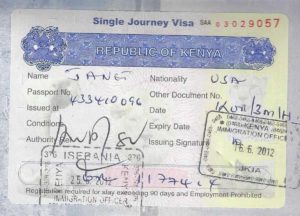
Thankfully, many more countries, including Australia, Turkey and Benin, have gone high tech with an e-Visa system. I have done this method for those 3 countries! Travelers fill out the visa application online. Once approved, your Electronic Travel Authority (ETA) visa is electronically linked to your passport.
You also get a PDF document of the e-Visa approval which you should print and carry with you. (see photo of my colorful Benin visa). The Benin e-visa process was easy, fast and cost 50 euros.
Lastly, many countries offer the convenience of a “visa on arrival” at your port of entry (see following section to learn more).
The fees for a Tourist Visa vary according to the nationality of the passport holder. For Americans, there is a wide range of fees – as low as $15 up to $150 or more. Apparently, there can be a bit of a diplomatic “tit for tat” between countries. In the past, when the U.S. raised the visa fee for Chinese travelers, China in turn raised the fee for Americans!
Similarly, in 2017, Brazil’s website stated the visa fee is “US$160, charged in reciprocity for an identical fee paid by Brazilian citizens who apply for a tourist visa to the U.S.” However, in 2019, Brazil stopped requiring visas for some travelers (including Americans).
Once again, showing that visa requirements are ever changing, starting April 10, 2024, Brazil is requiring nationals from the U.S., Canada and Australia to have an e-Visa (cost of $81) to enter the country.
Process for the Visa Application In Advance (via mail)
You can usually download the application form from the country’s embassy website, along with detailed instructions. Be diligent & make sure to fill out the form completely and exactly as they request – and don’t forget to sign it. Valuable time will be lost if your application was rejected for incompleteness and you had to start over.
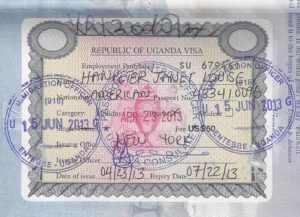
Some countries also require that you include a self-addressed, stamped envelope so they can mail your passport & visa back to you. With both this envelope, and the initial mailing of your package to the embassy, be sure to use a secure, trackable form of mailing. You certainly don’t want your passport or visa to be lost in the mail. Definitely a travel nightmare!
Visas on Arrival
The “visa on arrival” is a very convenient method of getting a Tourist Visa. I have done this many times upon entering a country, usually via their international airport – including Nepal, Cambodia, Tanzania, Ethiopia and Laos (photos below).
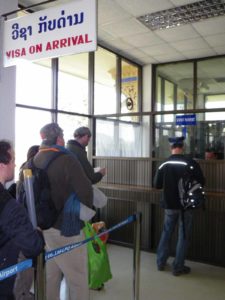
After you arrive in the country and deplane, follow the line towards immigration where you will first go to the “visa on arrival” windows. It’s a good idea to have your visa paperwork filled out ahead – so you can bypass some of your fellow passengers who still are doing theirs. This is especially helpful if your plane has dumped a large number of passengers all at once in one of the smaller foreign airports with limited staff working this area.
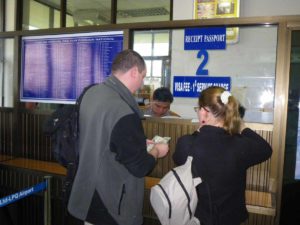
Caution: Carefully check ahead which “ports of entry” (airports & land border crossings) offer the visa on arrival, as it may not be available at all of them. Even if you can get this type of visa at the airport, land border crossings may be understaffed and not equipped to handle this.
Single vs. Multiple-Entry Visas
This is another important area to pay close attention to – and what caused one of my visa screw-ups! It seems that most visas offer single and multiple-entry options (or possibly a double-entry). Most of the time, you will only need a “single entry” visa but there may be some trips where you exit and reenter back into a country and need a multiple-entry visa.
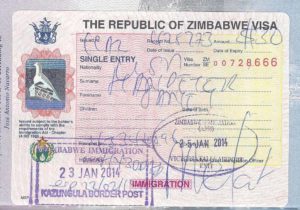
Also, it’s common for countries to charge a higher fee (possibly up to double) for a multiple-entry visa. The application process is usually the same as for single-entry. The multiple-entry visa may also allow a longer period of time in the country, which makes sense.
My Hong Kong & China Visa Travel Screw-up
So, you ask, what was my visa screw-up? Well, it happened on a China/Hong Kong trip back in 2001. I was on a tour of China which ended in Hong Kong. My group flew home and I was to fly back into China later that day for two more days of touring with a local guide (including a Li River cruise!). The tour operator arranged both trips plus the visa.
However, they got me a “single-entry” visa for China. I thought that was fine because Hong Kong had recently become part of China. (The transfer of sovereignty from the UK had taken place in 1997.) However, not so fine! When I arrived at the Hong Kong airport for my flight, I was denied boarding. I was shocked to learn that I had “left” China when I entered Hong Kong and it was a new “entry” to go back into China. I should have gotten a multiple-entry visa.
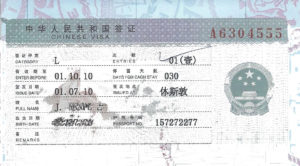
It was certainly anxiety-inducing at the time (an understatement!) but luckily, the story had a happy ending. However, it was a big lesson learned about the concept of multiple-entry visas! And a cautionary tale if you’re doing a similar type of China/Hong Kong trip.
Make Sure Your Passport is In Order
Since travel visas are “connected to” and/or stamped in your passport, it also needs to be in good order to avoid a travel disaster. You need a valid passport – with an expiration date usually good for 6 months after your return date of travel. In addition, make sure you have enough blank pages in your passport for the visa and the entry & exit stamps (as per each country’s requirements).
Visit the U.S. Department of State’s website (as mentioned above) to review your destination country’s specific requirements for these items under Quick Facts – Passport Validity and # of Blank Passport Pages.
Always check your passport’s expiration date far in advance of your trip (at least 3 months), especially if it’s been a while since you looked. That way, you’ll have plenty of time to renew your passport, if needed.
Many a traveler has pulled out their passport only when packing for a trip to discover – in abject horror – that it had expired or was getting close. Please don’t let that be you!
U.S. passport processing times have returned to their pre-pandemic norm but there will always be busy periods (like before summer travel). Currently (April 2024), the State Department Passport Timetable webpage says that passport applications will be processed within 7-10 weeks for routine service and 4-6 weeks for expedited service.
My blog post on US Passport Renewal has helpful tips on how to renew your passport.
Other Important Visa Travel Tips
1) Plan Ahead / Allow Adequate Time for the Visa Process
- The visa application can be a lengthy process, especially if you need to apply for a visa in advance by mailing your application (with passport) to the embassy.
- This can be further complicated if your upcoming trip has a second destination country requiring a visa and/or if you need to renew your passport during this time.
- Remember that in these types of “manual” visa applications, you have to “give up” your passport for a period of time – preventing you from most overseas travel until you get your passport back.
- This is another reason why it is so important to check your passport expiration date well in advance – along with the visa requirements for all countries you will be visiting so that you allow enough time.
- However, in a time crunch, you can always pay for expedited services or use a visa service (see below) but they will cost you.
2) Be A Perfectionist with Visa Application Forms
- Carefully “follow to the letter” all requirements when filling out visa application forms being sent to an embassy to be processed
- Common snafus are forgetting to sign the form or to enclose the correct fee
- Make sure you always send your application package (with passport) via trackable mail
3) Acceptable Visa Photos
The rules for “passport-sized” (2×2 inch) visa photos are usually similar to those for U.S. passport photos. Check those rules here.
- These include not wearing a hat or sunglasses and adhering to a specific format.
- However, check your country’s specific requirements for the last word.
- Some countries don’t want you to staple the photo to the application, so check that too.
4) Visa Expiration Dates
Period of Stay – the number of days allowed in a country on a single visit
- Visa Validity – the period during which you are allowed to enter (and remain in) a given country.
- The visa issuance date is shown on the visa along with the visa expiration date. The time between the two dates is your “visa validity.”
- Be mindful of your visa’s expiration date. Don’t overstay. Countries don’t like that!
- Some visas might be good for only a short period (like 3 months) after issue – so be careful not to order the visa too far in advance or it might expire during your trip.
Passport & Visa Services – Should You Use Them?
There are private passport & visa agencies who, for an additional service fee, can assist travelers with obtaining their visas. This can be particularly helpful if you are really crunched for time or dealing with complicated visa applications and/or feeling overwhelmed by it all.
These agencies have staff that can stand in line at the embassies and consulates to expedite visa applications, relieving you of the burden of having to do so yourself (when on a tight deadline). Plus, you can apply for several visas at the same time, without needing to enter repetitive info online. These services certainly cost more than doing it yourself, but they can be critical if you need rapid turnarounds.
The agencies stay current with the latest visa requirements so they can answer questions and advise you on filling out the forms — China, for instance, has a particularly complicated and confusing form. Making a mistake on it could delay or derail your application. Other countries that also seem to have complex visa processes include Brazil, India and Russia.
Key Reasons You Might Want to Use A Visa Service:
You need a visa from a country which requires an advance application (via mail) – and it is one of the countries with a complex visa process.
- You are visiting multiple countries and need more than one visa so you would like to have the visa applications taken care of at the same time.
- You are on a tight deadline and need rapid turn- arounds along with guaranteed delivery dates for the visa and/or passport renewal.
- You don’t want the hassle or aggravation and are happy to pay the experts to do it for you.
- You are a business traveler (and many of the above apply!)
Here is an interesting USA Today article (still valid from 2013) on the subject: Is it worth it to pay extra for passport, visa services?
Of course, it is always a personal choice. What I can say from experience is that the “visa on arrival” and the new e-Visa online applications are pretty easy – plus the need for expedited timing doesn’t factor in. So, you might be best spending your money in using a visa agency for those cases listed above.
What Visa Agencies To Use?
Before my 2023 West Africa trip, I had never used a visa service. For my original blog post (2017), CIBT had been recommended by a trusted travel agent friend. In addition, TraVisa, VisaHQ, and Travel Visa Pro were recommended by the VisaHunter blog post entitled: Best U.S. Visa Services. Regardless, it’s a good idea to check reviews & compare prices of a few different visa agencies.
Visa Agencies You Can Check Out (2024):
- CIBT Visa Service
- TraVisa (a CIBT company)
- VisaHQ
- RushMyTravelVisa (used by AAA)
- Travel Visa Pro
My Recent Experience with CIBT Visa Service
I used CIBT Visa Service for my Ghana visa since the application process was complex and I wanted to make sure there were no delays due to a tight timeline. I started the process online with CIBT which detailed everything I needed to submit.
This included a completed visa application form, my passport, copy of flight itinerary with ticket number, 2 recent passport-sized photos, yellow fever card, covid immunization card (necessary at that time), and a letter of invitation from our TransAfrica tour operator (for proof of travel arrangements for duration of the trip).
First, I filled out the info online & uploaded scans of needed items to CIBT. After they checked my documentation to make sure all was in order, I was emailed instructions on the items that I needed to send to their CIBT office in New York – including my original passport & signed visa application. I used the FedEx label they sent me.
Two weeks later (in January 2023), I received a UPS Next Day Air package with my passport and the Ghana visa attached to one of the pages. Voila – I breathed a sigh of relief knowing I had my visa safely in hand (especially with my international departure date in just 2 weeks)!
Total Costs for My Ghana Visa
I’m glad I used a Visa Service but be aware that costs can really add up! The fee for a Ghana single entry visa was $60 plus a consular processing fee of $4. CIBT’s cost for processing a Standard Tourist visa was $179. The inbound shipping label (FedEx) was $57 while the UPS return package fee was $53. There was also a $21 money order fee (for CIBT to pay the Ghana embassy’s visa fee). My total cost paid to CIBT (by credit card) was $374.
I will also caution you to watch the fees carefully. I did not opt for the expedited Ghana visa service (by the embassy) which would have cost $100 vs. $60. In addition, I declined CIBT’s digital photo service ($30) & the passport replacement coverage of $43 – both which were not necessary but they tried to sneak in there!
Here’s A Cool “Visa Widget” from VisaHQ:
In Closing – Brazil Story: My Other Visa Screw Up
I hope the information in this blog article will help you successfully navigate the often tricky world of travel visas and avoid a major travel mishap. I’ve already shared the first of my two visa “travel nightmares” with China & Hong Kong. Guess it’s time for “True Confessions – Part 2”! This time Brazil was involved – and it was entirely my fault!

So, with full naivete, I arrived at the La Paz, Bolivia airport (accompanied by my local guide Valeria) for my afternoon flight to Rio. At the Varig airline counter, the agent asked for my tickets and passport – and then for my Brazilian visa. In shock, I stammered “What visa?” Yikes, I had royally screwed up. I didn’t have a visa – so I was not flying to Brazil that day.
Could I Salvage My Brazil Trip?
I returned to my La Paz hotel to book another night. Then Valeria & I headed off to the Brazil embassy to see if we could possibly obtain a “quick visa” so I could take a flight to Rio the next day. It was now Friday afternoon at 3pm. The embassy visa clerk gave me the forms to fill out. She told me I would need a bank money order for the visa fee – and this couldn’t be done until Monday!
She also said there was only a 40% chance she could do a one-day turnaround on Monday after I returned with everything. Even if so, I wondered if this all could be done in time to catch the 2:40pm Monday Rio flight. And, that also depended on whether I could even get a seat on that very booked flight.
So, most likely, I would not be able to fly to Rio (with the Brazil visa) until Tuesday – 4 days later than my original plans. However, my international flight back home to the U.S. from Brazil was the next day, on Wednesday. The writing was on the wall – no Brazil this trip!
So, I had to call Peggy in Rio – with both of us in tears on the phone – to tell her I wasn’t coming. Instead, I ended up flying home from Bolivia to the States the next morning. That Brazil visa “episode” was certainly a very painful lesson learned. But, I’m happy to report: No More Visa Travel Disasters since then!
COMMENTS: Have you had any challenges (and/or “screw-ups”) with Travel Visas? Have you found some country’s visa processes to be more complicated than others? Do you have some positive travel visa experiences to share? I’d love to hear!

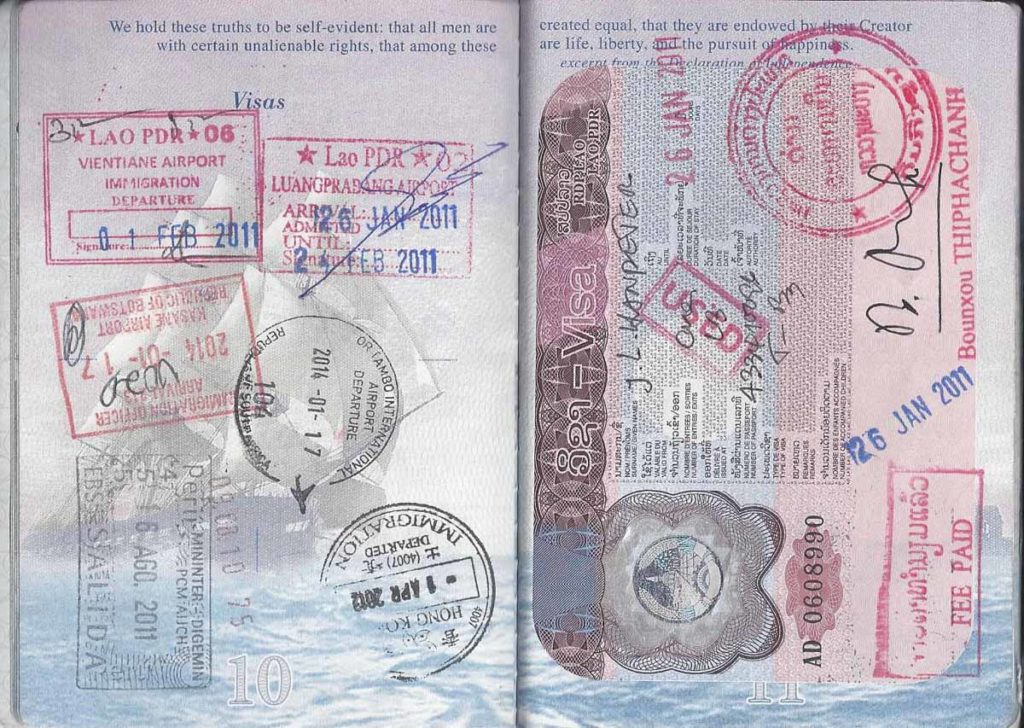
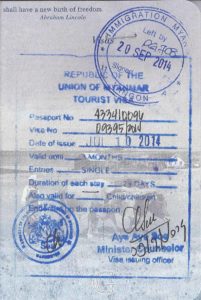
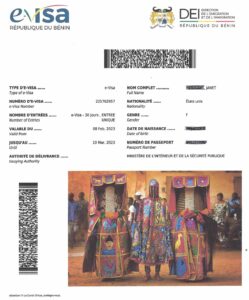
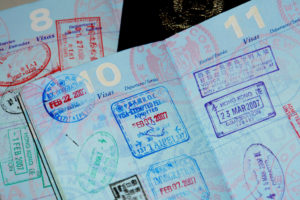
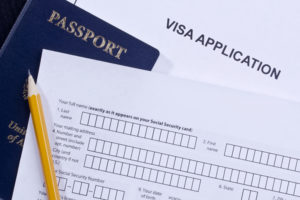

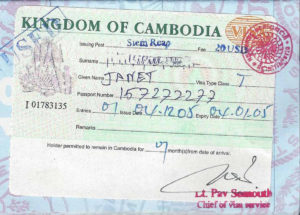
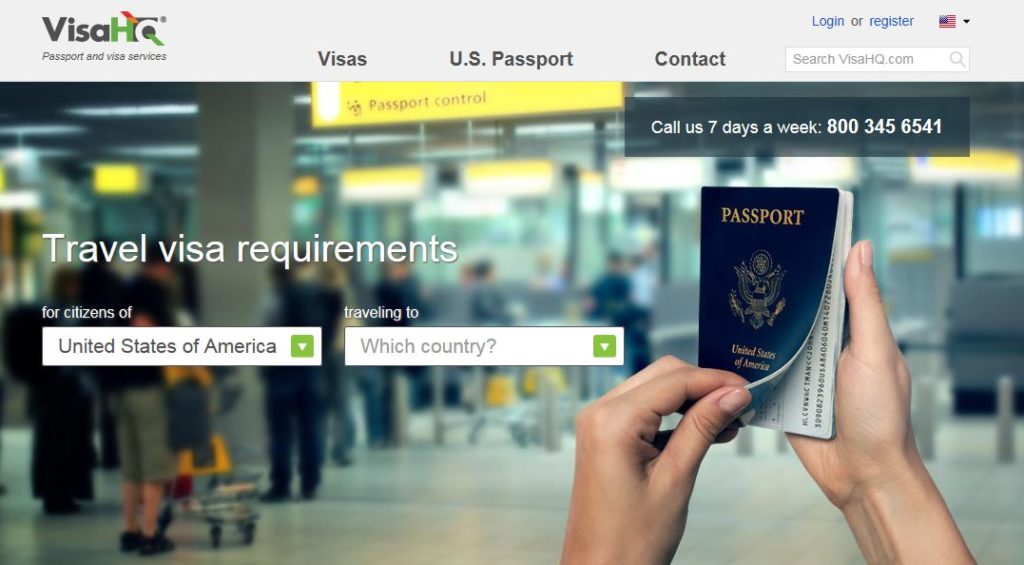
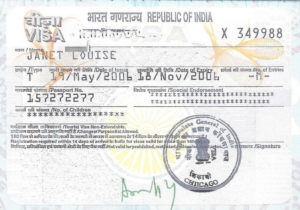





Wow Janet. Your Visa blog was so informative and entertaining. So many things I didn’t know. Thank you, thank you!
You are most welcome, Connie. Glad you enjoyed it and found it helpful! As you read, I really did mess-up big time in the past regarding travel visas so I felt it was my “duty” to help others avoid my mistakes!
Thanks Janet. I just found your blog and you are so very helpful. I’m going to be heading to Antarctica and my passport would only have 3 months to expiration on it. Do you know why there is usually a 6 month until expiration requirement?
Thank you Judy & welcome to Planet Janet! How exciting that you’re heading to Antarctica. I know you will be enthralled like all travelers there are (including me!). It’s a very special place! And, you ask a very good question about the six months validity passport rule. Here’s the answer from a good source:
It is not a requirement of the U.S. government. The six-month validity passport rule is a requirement of other countries accepting foreign travelers. The rule is enforced because nations do not want to risk having travelers and tourists overstaying their passport validity. Six months is now the standard validity requirement for many countries. Most visitors to the United States are also now required to have six months validity of their passports.
I must say, after reading your travel visa article, I’m very impressed. You made the complex topic of visas so easy to understand. Thanks for explaining the different visa types, how to apply for them, and reminding us about passport validity. Your tips on using visa services and being careful with forms are very helpful. You really nailed explaining this important travel information clearly and simply.
Thanks, Rilwan for your kind words. Yes, the “world of travel visas” is more complex than one would think! But, we all know stories of people (including me) who were denied entry to a country because they didn’t have the proper visa.